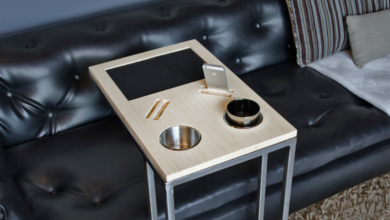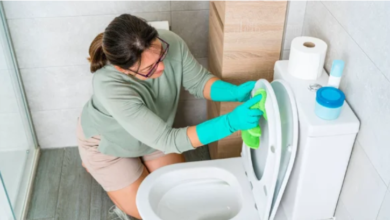Plumbing a Shower: A Homeowner’s Installation and Upgrade Guide

Plumbing a shower is an essential part of any bathroom installation or renovation. Whether you’re installing a new walk-in shower or upgrading an existing one, understanding how to plumb it properly is critical for long-term functionality, comfort, and water conservation. From rough-in plumbing to installing fixtures, this guide covers the key steps to plumb a shower in your home.
Tools and Materials You’ll Need
Before starting, gather these common tools and materials:
- Pipe wrench or adjustable wrench
- Pipe cutter or tubing cutter
- PEX, copper, or CPVC piping
- Soldering kit (for copper) or crimp tools (for PEX)
- Shower valve assembly
- Showerhead and arm
- Teflon tape
- Silicone sealant
- Backer board (for tile showers)
- Safety gloves and goggles
See also: Home Automation Installation: Simplifying Your Life with Smart Tech
Step 1: Plan the Layout and Shut Off Water
Determine where the shower will be located and how you’ll route both hot and cold water lines. A standard shower typically requires:
- One hot water line
- One cold water line
- A mixing valve to control temperature
- A riser leading to the showerhead
Next, shut off the main water supply. Drain any remaining water in the pipes by opening nearby faucets.
Step 2: Rough-In the Water Supply Lines
If this is new construction or a complete remodel, you’ll need to run the hot and cold water lines from your home’s main supply lines to the shower wall cavity.
For copper piping:
- Measure and cut pipe segments to length.
- Clean the pipe ends and fittings with emery cloth.
- Apply flux and solder joints using a torch.
For PEX piping:
- Cut to size using a PEX cutter.
- Use crimp rings and a crimping tool to attach fittings securely.
Make sure the water lines are secured between wall studs using pipe straps or brackets to prevent rattling or shifting.
Step 3: Install the Shower Mixing Valve
The shower valve is the heart of your shower plumbing system. It mixes hot and cold water to provide a comfortable temperature.
- Position the valve at a standard height (typically 48″ from the floor, but adjust as needed).
- Follow manufacturer instructions to secure the valve to the wall framing.
- Connect the hot and cold water supply lines to the corresponding inlets.
- Attach the riser pipe leading upward from the valve to the location where the showerhead will be installed.
- If you’re including a tub spout or a diverter, install and connect those lines as well.
Ensure all connections are watertight and properly braced. Check that the valve is centered and level with enough depth behind the finished wall surface.
Step 4: Pressure Test the System
Before closing up the wall, conduct a pressure test:
- Turn the main water supply back on.
- Open the valve and check for leaks at every connection.
- Close the valve and monitor for any pressure drop.
If any leaks are found, shut the water off again and tighten or rework the fittings as needed.
Once everything checks out, turn the water back off and drain the lines.
Step 5: Install a Waterproof Backer Board
To protect your walls from moisture damage, install cement board or another waterproof backer behind your shower tile or enclosure.
- Screw the board to the studs.
- Seal joints with mesh tape and waterproof thinset or sealant.
- If using a shower insert or surround, follow the manufacturer’s instructions for attaching and sealing panels.
Proper waterproofing is essential to prevent mold and water damage behind the walls.
Step 6: Tile or Install Shower Surround
Now you can finish the shower walls. Common options include:
- Tile: Use waterproof mortar and grout. Be sure to slope any built-in shelves slightly downward to prevent water pooling.
- Acrylic or fiberglass surrounds: Apply adhesive and secure panels into place. Caulk the seams for a watertight seal.
Allow adequate drying time before using the shower.
Step 7: Install the Showerhead and Trim Kit
Once the wall surface is finished, install the external parts of the shower:
- Wrap Teflon tape around the shower arm threads and screw it into the riser pipe.
- Attach the showerhead to the arm using a wrench and protect the finish with a cloth.
- Install the trim plate, handle, and any other decorative parts according to the valve manufacturer’s instructions.
Make sure everything is aligned, secured, and moves freely.
Step 8: Final Testing
Turn the main water supply back on and run the shower. Test:
- Water temperature – Ensure the valve mixes properly.
- Water pressure – Make sure the showerhead delivers sufficient flow.
- Leaks – Check around the valve trim, showerhead, and riser.
If everything functions correctly, the installation is complete.
Maintenance Tips for a Healthy Shower System
- Clean the showerhead regularly by soaking in vinegar to remove mineral buildup.
- Inspect caulking around the enclosure to prevent moisture intrusion.
- Check for leaks behind the valve trim and around wall seams annually.
- Flush the system every year by removing the showerhead and letting water flow to clear debris.
When to Call a Professional
You may need a licensed plumber if:
- You’re relocating plumbing significantly (e.g., across the room).
- You need to upgrade outdated or damaged pipes.
- The installation involves multiple fixtures or complex diverters.
- You’re unsure how to meet local plumbing codes.
A professional can ensure everything is properly installed, leak-free, and up to code.
Conclusion
Plumbing a shower in Noblesville requires attention to detail and adherence to safety standards, but it’s absolutely within reach for capable homeowners. Whether you’re building a luxurious walk-in shower or upgrading a basic setup, understanding each step—from water line layout to fixture installation—ensures that your shower system will operate efficiently and reliably for years to come.




